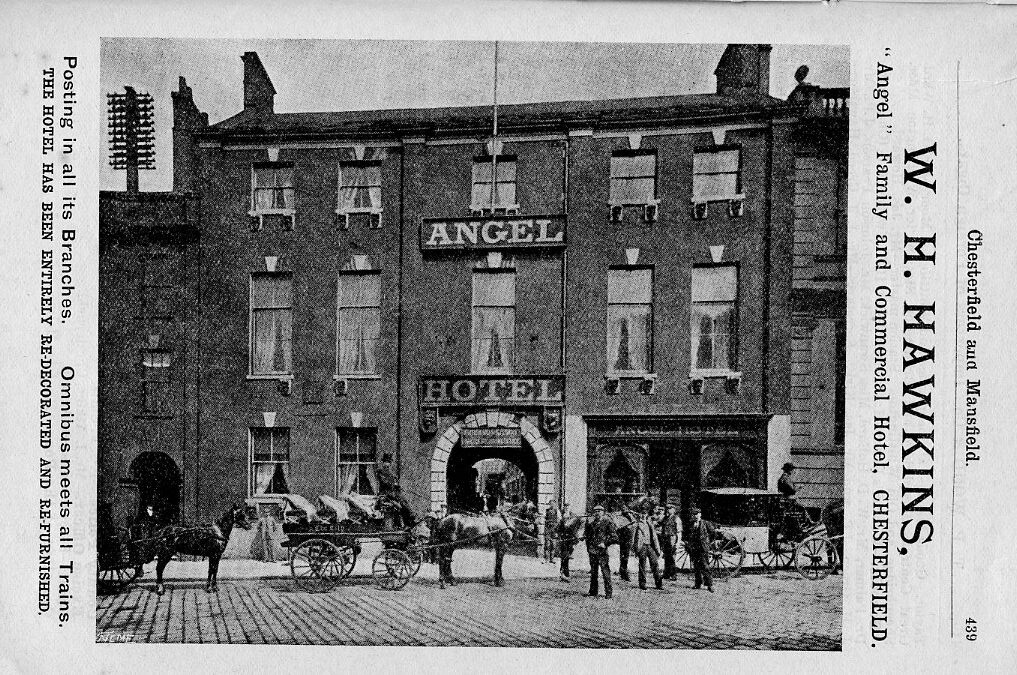We are returning to Angel Yard, more particularly the Angel Hotel, for this post. Our illustration here is an advertisement taken from TP Wood’s Almanac for 1900. It shows the hotel sandwiched between the National Westminster Bank and the former post office – all opposite the Market Hall. The entrance to Angel Yard is through the central archway.

John Hirst’s ‘Chesterfield Pubs’ (2005) tells the later story of the hotel, which, by the mid-19th century, had become one of the best in Chesterfield. He cites an 1890 commercial guide to Chesterfield which gives details of the accommodation – 20 bedrooms, billiard room with three tables, coffee room, dining room and commercial room. The ‘Oak Room’ was said to the finest dining and ballroom in the county. Of 60ft by 30ft it could seat 120 people. Stabling was available for 80 horses.
Our own ‘Chesterfield Streets and Houses’ book explains that the Angel Hotel took the name of an inn further east along High Street. This was possibly while other name changes for inns were taking place in the area in the 1790s. Until that time the Angel was called the Castle Inn. We also push the story back a little further – earlier into the 17th century – as we believe that the site was once owned by the one-time influential Clarke family.
In the early 1780s John Saxton was the landlord and also the Chesterfield postmaster. The Newcastle, Birmingham, Bristol and Bath coaches all called there. The coming of the railways from the 1840s reduced The Angel’s importance as a coating inn, but it was still regularly used for assemblies, auctions and stabling. It was, itself, sold in 1876 for £11,300 – a considerable sum at the time.
By the late 19th century, the Angel was owned by Sheffield brewers Wm. Stones Ltd. But, the Angel’s days were unfortunately numbered. Stones owned the nearby Hotel Portland, with its more modern accommodation. In 1915, deeming that the Angel was surplus to requirements, Wm Stones gave up the hotel’s licence. The Angel Vaults was, however, retained. This comprised two rooms, used as a public bar (on the right-hand side of the photograph), until 1920 when the licence was transferred to a new Angel Hotel on Derby Road (now Tesco).
Since 1915 the hotel had been used as a British Red Cross waste paper depot. A dramatic fire, on an icy February 1917 night, seriously damaged the hotel building, with water from the fire-fighting inundating the Vaults.
John Hirst states that the building was finally cleared in 1926 with an extension to the Westminster Bank and former Post Office covering most of the site. A small gap marks Angel Yard – the subject of our post of 21 February 2021.
There’s a good account of 17th century coaching inns in the town (including the Angel) in Rosemary Milward’s 1980 article in the Derbyshire Miscellany (pages 31-7), although by a slip of the pen, on page 31, the Angel is placed on the south side of the Market Place. You can read this free by following this link.
